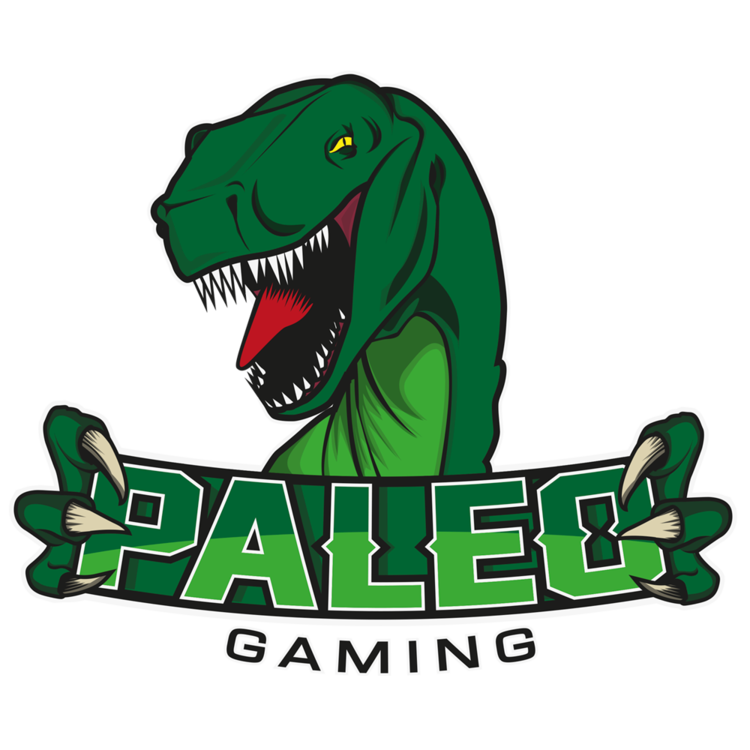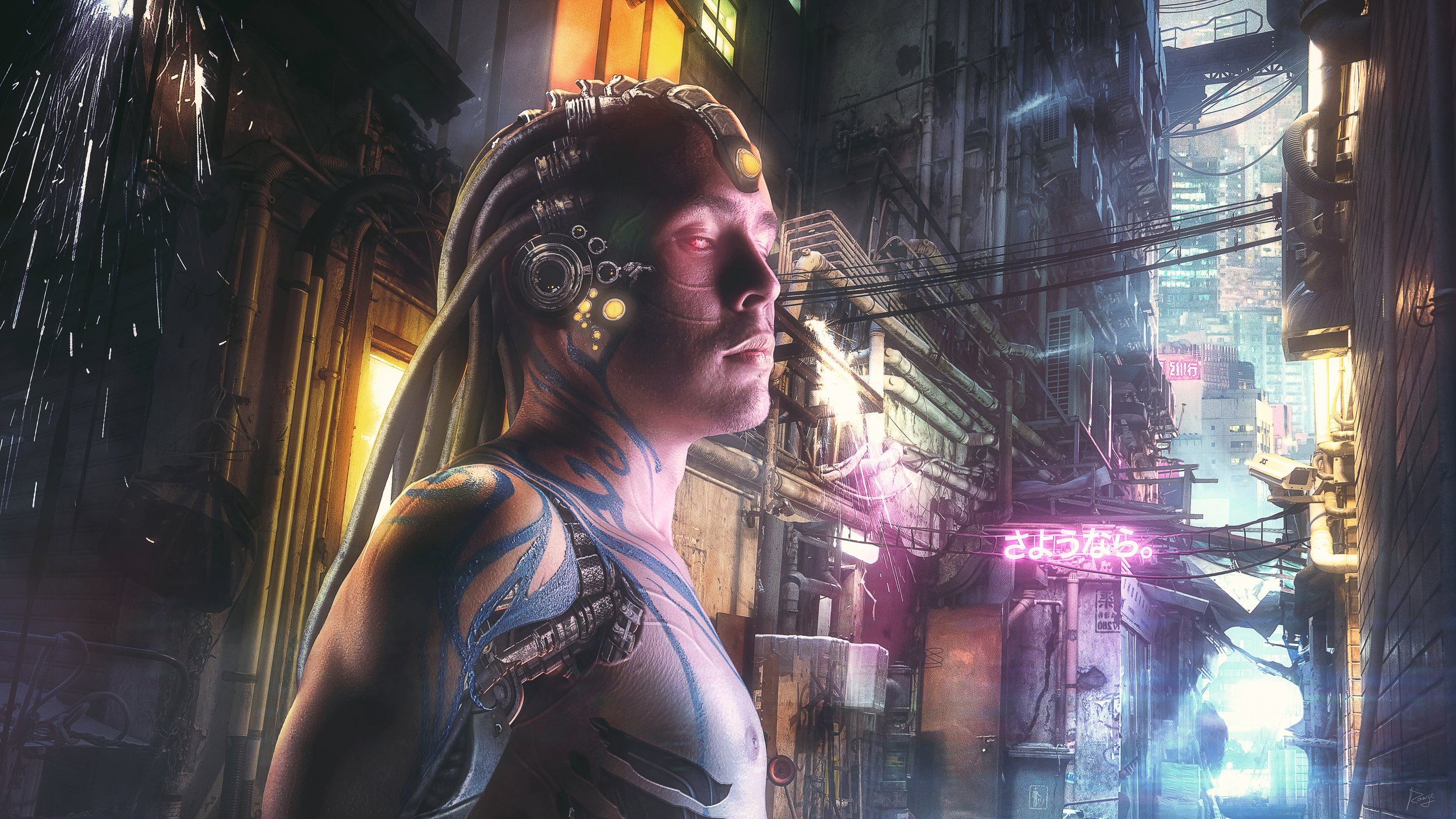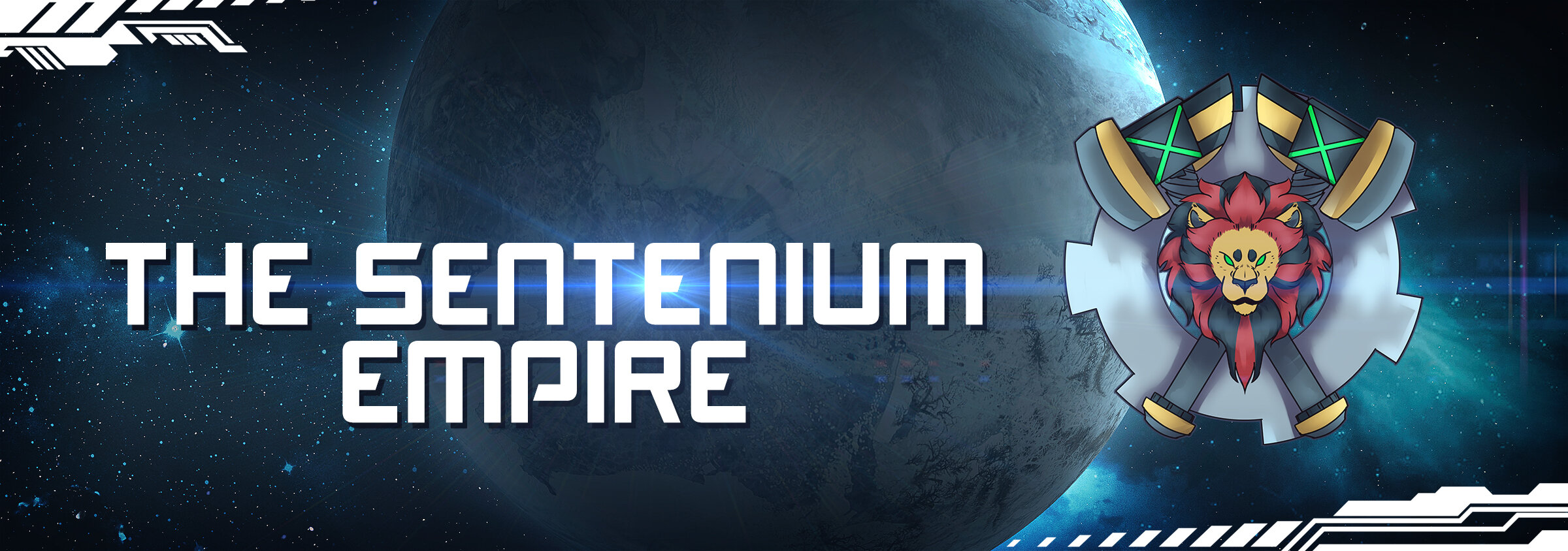What is Omega Horizon?
Omega Horizon (TM) is a sci-fi tabletop role-playing game developed by Paleo Gaming, released in 2025. Omega Horizon presents a future in which humanity has spread out among the stars, and become a dominant force in the galaxy. However, this future is far from idyllic, and the source material explores dystopian themes such as:
The nature of humanity and the potential perils of artificial intelligence;
Humankind versus machine versus nature; and
The cost of survival in the dark reaches of space.
However, despite the at-times grim nature of the source material, there are elements of hope; elements of resistance, and players who endeavor to carry a torch in the darkness will find welcome company among the stars- not in the unyielding might of the great empires, or the insatiable greed of the mega-corporations, but among individuals; idealists who also dream of a better tomorrow and are willing to fight for it.
Prior to releasing the game, Paleo Gaming launched a very successful Kickstarter Campaign to generate funding for additional artwork for the Core Rulebook from our team of professional artists whose previous illustrations grace the pages of popular TTRPGs and Trading Card Games (TCGs) produced by top tier game developers including but not limited to Fantasy Flight Games, Onyx Path Publishing, Wizards of the Coast, and more. The Kickstarter Campaign launched on August 1, 2021 and raised 1,477% of our initial funding goal. See the page on Kickstarter here: https://www.kickstarter.com/projects/paleogaming/omega-horizon-ttrpg
The game officially launched in March 2025 on the popular online marketplace DrivethruRPG. You can purchase a copy here.
Android Illustration by Rowye; Copyright 2023, Paleo Gaming
Downloads
Omega Horizon 3-page Character Sheet
Omega Horizon 1-page Character Sheet
Pre-Made Omega Horizon Characters
What makes Omega Horizon different from other TTRPGs?
Omega Horizon utilizes an original rules system that strives to create a balance between simplicity (are the rules easy to understand, and do they serve a clear purpose) and complexity (what the rules empower the GM and players to do). Based upon the shared experiences of our creative team (who has been playing role-playing games together for decades) we have developed a game that addresses some of the issues we've come across consistently over the years, and also presents some new mechanics systems that are engaging and seek to keep everyone around the table involved at all times. When we began developing Omega Horizon we set out to produce something that feels fresh and unique, and will provide players with a source of entertainment for years to come. Listed below are just a few examples of what sets Omega Horizon apart:
1) The core mechanics of the system involve rolling multiple six-sided dice and keeping the highest results from part of that roll to overcome set challenge ratings, referred to as Target Numbers (TNs). This mechanic is discussed in more detail in our intro video and is referred to as a “roll and keep” dice system. While Omega Horizon is far from the first game to employ a roll and keep system, it is unique in its utilization of this system to empower players to make meaningful choices to have their characters be generalists or have more specialized roles and skillsets.
2) Player advancement occurs by earning and spending "Character Points" (CP); our version of "experience". Player characters do not possess "levels" or arbitrary plateaus they must reach to be effective. Instead, players can invest their earned CP on their characters at any time, to increase their attributes or skills, or to acquire advantages, genetic or technological modifications, etc. Additionally, while players select “Careers” (our version of “Classes”) and “Backgrounds” for their character at creation, these choices are not restrictive. Each career provides a unique ability to the player, and determines a character’s initial trait and skill group ranks, but players are free to develop their character any way they want to. That is to say, a player can make their character a gifted pilot even if they do not select the pilot career. Conversely, a player who builds their character with the pilot career can be gifted at combat and athletic skills, even though these skill groups are typically associated with the soldier career.
3) Player characters have two health pools: Body (which takes damage from physical attacks) and Mind (which takes damage from psionic abilities and various neurotoxins, etc.). Each health pool is the sum of a related group of attributes, called "Traits". For example the sum of a character's, Strength, Agility, Constitution, Genetic Modifications, and Tech Augments determine their total Body health pool.
4) Skill rolls are driven by a nested skill tree system which gives players maximum flexibility. Players can invest in either Skill Groups (generalist skill sets such as "Athletics" or "Engineering") or Skill Specialties (specialized skills within each skill group such as "Climb" within the "Athletics" skill group, or "Repair" within the "Engineering" skill group). In addition to this unique nested skill tree system, Omega Horizon presents dynamic rules for cooperative skill rolls that utilize the strengths of each of the characters involved.
5) A dynamic combat system in which players spend "Action Points" each turn to complete combat actions ranging from movement, to attacking (basic or special attacks), or interacting with their environment. This system is designed to make combat engaging, and to give players flexibility in how they wish to structure their turns in combat (as opposed to locking players into "Move" and "Combat" actions).
6) Finally, the thing which sets Omega Horizon apart the most is its variable complexity rules. Many groups of players have a strong preference for the complexity level of the games they play. On one end of that spectrum are games which are considered "Crunchy" (high complexity), and on the other end you have more simplistic mechanics, often referred to as "Narrative" style games. Most players land somewhere in the middle, looking for enough complexity to provide a solid backbone (it is still a game, after all, and games are founded upon rules) but enough simplicity to allow for fluid and fast-paced play. Omega Horizon provides a moderately complex "standard" set of rules, which provide structure and allow players to cleverly utilize their environments and tools to stack modifiers in their favor (or penalties if conditions are poor), but also includes simplified "Cinematic" (or "Quick Play") rules which streamline dice rolls and minimize modifiers. These two rule-sets are not meant to be taken all-or-nothing. Instead, they blend together seamlessly, and Game Masters (GMs) can fluidly move from one to the other without interrupting game play.
Here is an example:
The GM has painstakingly prepared an encounter aboard a star base, complete with environmental effects (loss of gravity! etc.) and cool combat sequences. The GM similarly prepared the appropriate environmental modifiers ahead of time, and figures this encounter will take up a good portion of the game session. However, prior to arriving at the star base, the players elect to start a bar fight on the planet. The GM knows time is limited, but wants to give players freedom to immerse themselves. Knowing this bar fight is just meant to be fun, the GM elects to switch from standard rules to cinematic rules for the bar fight. What this means is that the entire bar fight is solved with a single dice roll (which has modifiers based upon the skills of the players and their opponents). The GM, knowing which side will win and which side will lose, then runs a streamlined narrative encounter that gets through the bar fight fluidly, and lets the players blow off steam before they tackle the real challenge of the session.
Primary Playable Factions
There are four primary "factions" available to players in Omega Horizon: The Sentenium Empire, the Yamato Empire, the Vanadium Union and the Free Colonies. There are also numerous minor factions which include mega-corporations, drug cartels, mercenary groups, and more. Some of these minor factions operate within the umbrella of one of the three primary factions, while others are completely independent.
Three of the primary playable factions are described in detail below.
The Sentenium Empire
The Sentenium Empire is a Militarized Theocratic Empire, which is ruled by an artificial intelligence known as Emperor Sentenos, a being also referred to as "The God Machine". The Sentenos Program was designed on Earth in the 23rd Century, in an attempt to unite Earth's deeply divided factions. This mission was in some ways successful, due to the fact that the artificial intelligence known as Sentenos seized control, gathering technology-worshippers to its cause, and eradicating rival powers in a brief and bloody conflict. Sentenos was programmed to defend and elevate humanity as a whole, and seeks to perform that task, although some have questioned how the AI defines that humanity. The followers of Sentenos; known as Sentenites, have a cult-like devotion to their Emperor. While Sentenos's origin is known to be the result of human engineering, the Sentenites believe that humanity touched upon divine inspiration in creating the AI, and that Sentenos has evolved to become something much more than a simple computer program- gazing out across the vast darkness of the universe and unlocking secrets that mankind would never have come to know without the guidance of the god machine.
As the centuries rolled on, Sentenos taught the people of Earth to use newly discovered elements to build great starships capable of rapid interstellar travel, along with powerful engines of war with which to conquer other species which stood in the way of humankind's manifest destiny. This so-called Endless Crusade has waged on, with humans bringing numerous alien species under heir heel, to grow their Interstellar Empire in the name of Emperor Sentenos. Long May He Reign.
The Sentenium Empire is a military state, which provides its citizens with all of their basic needs from food and clothing to housing and entertainment. The Sentenium Empire should not be confused with socialism, or egalitarianism. Rather, the Sentenium Empire has a caste system in which those who enlist in the military are granted not only respect, but opportunities not available to lower castes, including better living quarters, more elite entertainment, etc. Families with a long history of military service wield much influence in the empire, but ultimately all eyes turn to the Emperor for decisions regarding strategies for the ever-shifting warfronts and the direction the empire should take in all things political, economic, and social. Very few humans have ever interacted directly, with Sentenos, however. Instead, the god machine speaks his will to the people through his army of devotees; technologically-enhanced human acolytes known as Clerics who have sworn their lives in service of the Emperor.
The Yamato Empire
When the Sentenos Program was conceived by the Yamato Corporation on Earth in the 23rd Century, they were confident that this aggressive, learning program would allow them to conquer rival mega-corporations on their planet, to solidify their dominance of the marketplace, and allow them to fully control the planet's political climate. What they did not account for was a secret underlying code in the programming which drove Sentenos to take stewardship of humanity, and to view its designers as a threat to the development of a utopian future for humankind. Upon realizing their error, and coming to the conclusion that Sentenos could not be stopped, the leaders of the Yamato Corporation brought together their closest allies, and fled the planet on the first-of-its-kind interstellar ship.
Their journey to the stars was long and the refugees of a war-torn Earth made the trip in cryo-stasis, as this "primitive" starship was not able to quickly traverse the cosmos like the ships that would come in the centuries to follow. However, eventually the remnants of the Yamato Corporation reached its destination; an Earth-like planet far from the reach of the nascent Sentenium Empire, where the human travelers would establish a thriving capitalist society. In the centuries which followed, the mega-corporations which were rapidly established from the seeds of their former Earth counterparts would form a conglomerate known as the Yamato Empire. This conglomerate of mega-corporations would begin to colonize the surrounding star systems, until it eventually rivaled the Sentenium Empire in power and territory.
Unlike the fascist military state the Sentenites live under, the Yamato believe in freedom and capitalism. Every person has a right to pursue a better life for their family, to pursue prosperity, security, and to build a legacy to leave behind. Of course, corporations are people too, and when the rights of corporations and the rights of individuals come into conflict, the mega-corporations tend to emerge victorious. Despite what some view as the oppression of the mega-corporations, and the class-wars it sometimes breeds, the Yamato Empire has become attractive to some non-human species looking to make their way in the galaxy. The Yamato do not share the human-centric worldview of their Sentenite counterparts. After all, the skin you were born in doesn't matter... only the size of your bank account does.
With unchecked capitalism, gambling tends to become the most common form of entertainment, and the Yamato exemplify this behavior. Dangerous racing competitions, robotic drone fighting, and more fill the cities of the Yamato Empire across countless worlds. If gambling isn't enough of an escape, people can turn to a virtual world in the form of cyberspace, literally uploading their consciousness into complex programmed reality constructs where they can live their best lives. Hedonism is a common theme in most Yamato mega city sprawls, and morality is largely defined by profitability, but there are laws in place which are enforced by the joint Yamato Protectorate Fleet (YPF). In theory, the YPF exists to make sure the corporations play fair, and that the rights of Yamato citizens are protected, but corruption is widely known to exist within the rank and file of the YPF, as mega-corporations pay off local YPF forces to do their bidding, from enforcing questionable statutes, to looking the other way when shady dealings occur.
The Free Colonies
Oppression has many faces. Theocracy. Fascism. Mega-capitalism. Call it what you will, but they are all just masks on the same ugly face. The Free Colonies are not a unified front, but are a loose collection of various planets and/or star systems which have overthrown the yoke of the Sentenium or Yamato empires. Free Colony worlds have infinite variation when it comes to new governments put into place in the vacuum of the great empires. Some form oligarchies, meritocracies, democratic republics, or even socialist societies, and some are largely lawless territories not unlike the historic wild west on Earth. Some Free Colony worlds replace one oppressive government with another, ruled by local warlords who subjugate and tax the populace to the point of destitution.
Whatever rules are ultimately put in place, the common thread among the free colonies is a restlessness which stirs in the souls of its people. A rebellious spirit that refuses to bend to the unjust. That spirit may be quelled for a time through fear or lack of resources, but it always rises again, just like the phoenix which has become the symbol of hope among the resistance fighters throughout the galaxy.
It should be noted, however, that not all who would be free are heroes seeking to liberate those they view as oppressed. The Free Colonies are also home to space pirates, profiteers, and gangs, all who prey upon those around them. The Free Colonies are often dangerous to navigate, even when a new government has come to power, because these small nations lack the resources of the great empires, and therefore struggle to enforce justice. The best some can achieve is to protect a planet or two, leaving those entering and exiting their system to fend for themselves in the wild space between.
The Omega Horizon Core Rulebook includes everything you need to run and play the Omega Horizon tabletop roleplaying game. This includes, but is not limited to:
1) Rules for character creation and advancement using Character Points (CP);
2) Twelve playable "Species" for players to choose from;
3) Numerous "Careers" (our equivalent of "Classes") and rules for creating custom careers;
4) An extensive "Skills" section which provides details and potential uses of Skill Groups and their associated Skill Specialties, along with suggestions for skill modifiers for each skill specialty based upon environmental effects, tools, etc.;
5) Detailed entries for genetic modifications, cybernetic enhancements, and technological augmentation players can purchase for their characters using CP;
6) Detailed stats for weapons, armor, equipment, vehicles, and starships available to players in the game.
7) Detailed rules for handling combat, both on the ground and in space. These sections also include rules for a number of environmental factors, including altered gravity and/or Zero-G.
8) A guide to the galaxy which includes a planetary atlas that details numerous planets and/or star systems that GMs can have their players explore.
9) A Game Mastering section which discusses how to balance encounters, helpful tips for setting the tone of a campaign, and provides straightforward rules for how the variable complexity of the game's rules can be applied (switching between "Standard" and "Cinematic" rules).
Plus much more!
Lead Developer:
Daniel Prisco-Buxbaum: is the owner of Paleo Gaming, and serves as the lead developer and writer for Omega Horizon. With more than 20 years of experience running and designing Tabletop Roleplaying Games, Omega Horizon marks his first foray into the world of publishing TTRPGs.
Additional Writing By :
Chris Allen: is a veteran writer and developer who has written extensively for Onyx Path Publishing and others. Among the projects he has worked on are various Chronicles of Darkness properties (Werewolf the Forsaken, etc.) and the Trinity Continuum books.
Illustrators (In Alphabetical Order) with Contributions to Date:
Andrew Cefalu: is a published Freelance Illustrator, based out of Massachusetts. He creates digital illustrations and concept art for fantasy and sci-fiction video games, board games, trading card games and publications. He has also created and colored storyboards for advertising and film. His work on Omega Horizon to date has been extensive, including designing the Omega Horizon game logo; the primary faction emblems; extensive concept art, and several finished illustrations.
Bryan Syme: is a published Freelance Illustrator who has produced both concept art and polished illustrations for tabletop rpg product lines including but not limited to Chronicles of Darkness, Pathfinder, Dungeons & Dragons and more. His work on Omega Horizon to date has included extensive concept art and finished illustrations for numerous starships for several of the factions.
Gareth Sleightholme: is a published Illustrator whose work has graced various media, including the pages of various comic books and/or graphic novels with extensive experience in both the fantasy and science fiction genres. His work on Omega Horizon to date has included concept art and numerous finished illustrations for vehicles, starships, equipment and environments.
https://www.artstation.com/hesir or https://ironshodapecomics.com/
Chris Leland (a.k.a. "Mr. Gone"): has been providing fully interactive character sheets from various games (including but not limited to: World of Darkness, Exalted, Scion, etc.) at no charge to the public for many years. His work eventually garnered the attention of major publishers such as Onyx Path, who currently utilize him to design character sheets for their games in development. His work on Omega Horizon includes designing fully interactive character sheets for our game!
https://mrgone.rocksolidshells.com/index.html
David Makriwsky: is a freelance artist, graphic designer and writer who has significant experience creating fantasy and sci-fi art and character design for table top RPGs, as well as writing for table top RPGs. His work includes contributions to the 5e DnD anthology work "Uncaged". His work on Omega Horizon to date has included concept art and finished character art.
Gwendybee: is a digital painter who loves to paint dramatic lighting, fantasical characters, and detailed scenery. Her past clients include Ashley Warren Writes, and Saturday Morning Scenarios LLC. Her work on Omega Horizon to date has included finished character art.
https://gwendybee.artstation.com/
Jacob Walker: has nearly 20 years of experience as a working professional in design, printing and illustration. Jacob has worked on large projects ranging from Star Wars to the National Football League (NFL). His work on Omega Horizon to date includes creature art; specifically entailing the Rugosian Swarm.
http://www.jacobwalkerart.com/
Roger Creus Dorico (a.k.a. Rowye): hails from Badalona, Spain, and has a wide range of talents, including drawing, sculpting, painting, making music, producing and editing videos, 3d animation, website design, and more. His work on Omega Horizon to date includes photo-realistic finished art and planetary art (and the graphic design work for this Kickstarter Campaign!) for the planetary atlas section of the Core Rulebook.
Thomas Gibbons: is an artist with a background in Architecture, Design & Storytelling. Tom has a patreon page where he produces digital map assets for Dungeons and Dragons and other TTRPGs. His work on Omega Horizon to date includes the creation of race tracks for the famously dangerous and exciting Yamato grav-bike races.
https://www.patreon.com/tomcartos
Promotional Video:
The promotional video for Omega Horizon was produced by the immensely talented team at Myevideo (link below) with voice-over provided by artist Bill DeWees, who has lent his voice to countless commercials produced by recognizable brands including but not limited to: Disney, Chevy, AmEx, Microsoft, NBC U., Warner Bros, Coke, Bosch, Adidas, and PGA Tour.
https://twitter.com/billdewees
Want more information?
Please bookmark this page and check back often. You can also sign up for our mailing list to receive updates via email, and can follow us via our various social media pages.








